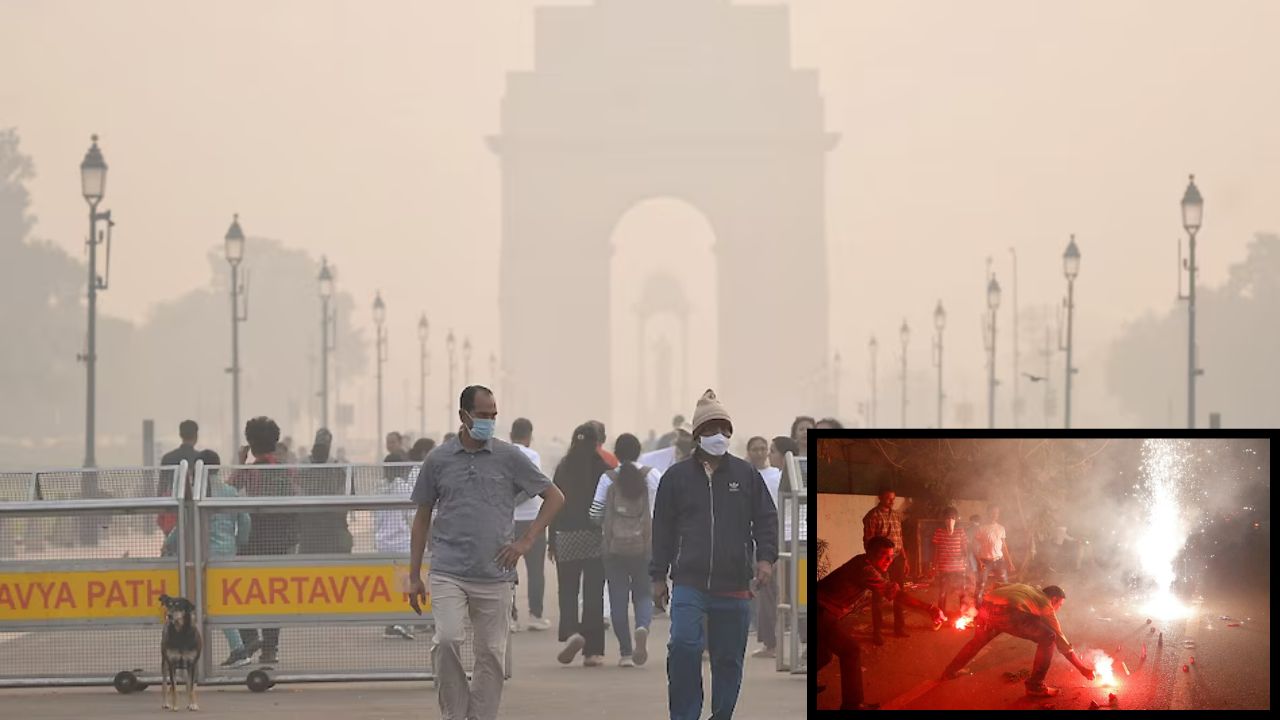 English
English

Delhi wakes up choking under thick smog just a day after Diwali, with AQI soaring past 400 in several areas. Which neighborhoods are the worst-hit, and how dangerous is the air today? The full picture is more alarming than you think.

Delhi woke up to an even worse air this morning.
New Delhi: The national capital woke up on Tuesday to a hazardous air quality scenario, as the city’s air turned thick with smog and toxic particles, just one day after Diwali celebrations. According to the Central Pollution Control Board (CPCB), the overall Air Quality Index (AQI) in the city stood at 350 at 8 am, categorizing Delhi’s air as ‘Very Poor’.
Most monitoring stations recorded readings in the red zone, raising health concerns for residents, especially children, the elderly, and those with respiratory issues.
Hazy Sunshine and Toxic Air Grip Delhi: Post-Diwali AQI in ‘Severe Category’
The worst-hit areas experienced ‘Severe’ pollution levels, making breathing extremely difficult. Here is the list of the top 10 most-polluted areas on Tuesday morning:
Bawana- 427- Severe
Wazirpur- 408- Severe
Alipur- 408- Severe
Jahangirpuri- 407- Severe
Burari Crossing- 402- Severe
Shadipur- 399- Very Poor
Ashok Vihar- 391- Very Poor
Punjabi Bagh- 376- Very Poor
Sonia Vihar- 374- Very Poor
Vivek Vihar- 374- Very Poor
Other parts of the city also experienced a significant drop in air quality. JLN Stadium (AQI 318), ITO (347), Lodhi Road (327), Anand Vihar (360), Okhla Phase-2 (353), North Campus, Delhi University (363), and Dilshad Garden (357) recorded “Very Poor” AQI levels, while the area surrounding Indira Gandhi International Airport also registered an AQI of 313.
The surge in pollution comes in the aftermath of Diwali, when fireworks and crackers traditionally light up the night sky. Despite the Supreme Court allowing only green crackers in the Delhi-NCR region this year, pollution levels spiked. The court permitted their use from 6–7 pm and 8–10 pm during October 18-20 and banned crackers brought from outside the NCR.
This move aimed to balance festive celebrations with environmental concerns, but evidently, the measures were not enough to prevent a surge in toxic air.
With winter setting in, Delhi faces an annual surge in air pollution due to low temperatures, low wind speeds, and increased emissions. The city’s AQI had already been deteriorating in the days leading up to Diwali, triggering the Graded Action Response Plan (GRAP 2) on Sunday.
Even after these measures, several areas recorded AQI in the “Severe” category, with Anand Vihar and Wazirpur surpassing 400, emphasizing the recurring nature of Delhi’s pollution crisis.
Chennai faces waterlogging on Diwali as heavy rain lashes city
Authorities have urged residents to limit outdoor activities, especially children, elderly citizens, and people with pre-existing respiratory or cardiac conditions. Using masks, air purifiers, and staying indoors as much as possible is recommended.
Environmentalists stress that stricter enforcement of green crackers, along with long-term pollution control measures, is essential to combat Delhi’s toxic air problem.
As the city grapples with its annual winter smog, citizens continue to face one of the most polluted environments in the world, reminding authorities and residents alike that festive celebrations must be balanced with health and environmental safety.